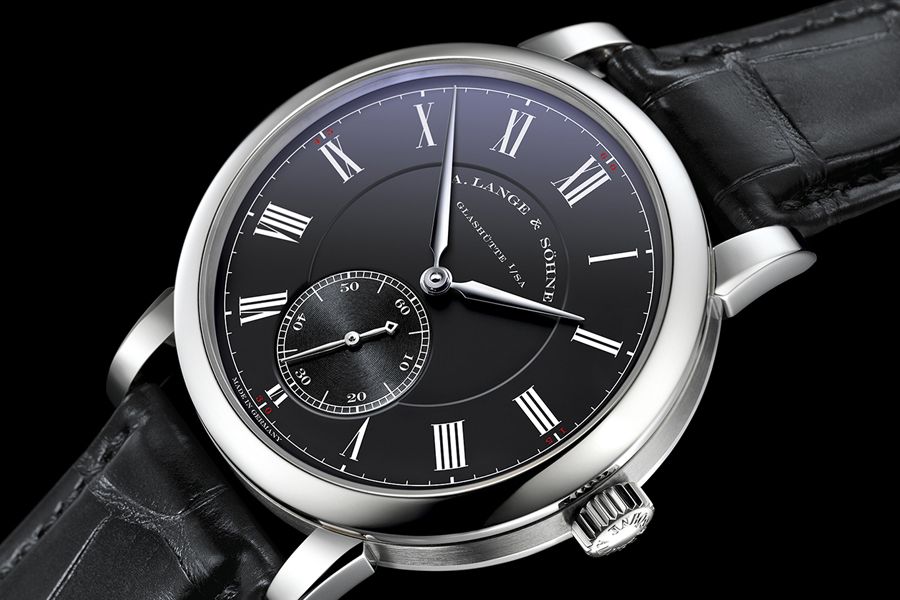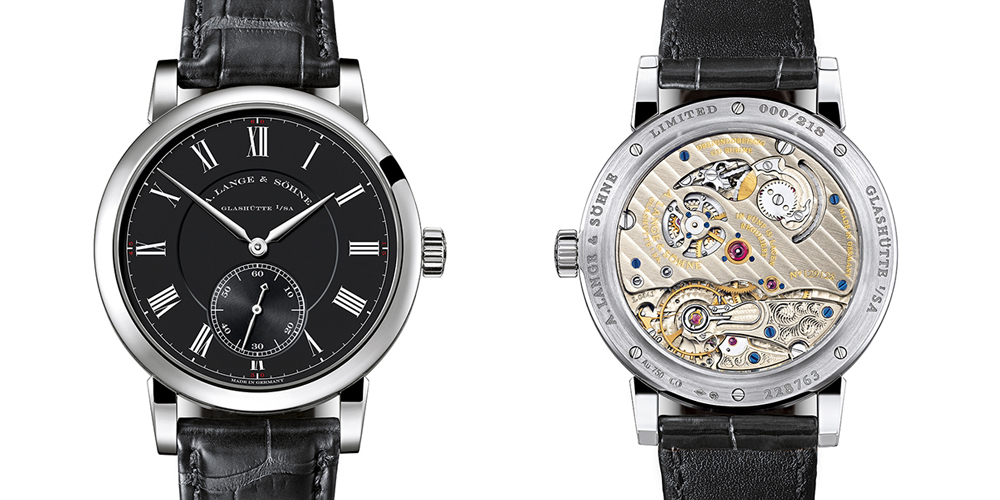Lange & Söhne: RICHARD LANGE «Pour le Mérite» in white gold
23 September 2016With a limited 218-watch edition of the RICHARD LANGE “Pour le Mérite”, A. Lange & Söhne revives the concept of the uncompromisingly precise timekeeping instrument. The new version in white gold with a black dial had its debut at the company’s inter- national dealer convention in Dresden on 22 September 2016. Its fusée-and-chain transmission ensures constant torque and superb rate accuracy.
The solid white-gold case of the new edition has a diameter of 40.5 millimetres. White Ro- man numerals and the rhodiumed gold hands contrast well against the black silver dial. Small Arabic numerals in red for 15, 30, 45, and 60 minutes add handsome nuances of col- our to the underlying black-and-white design. A hand-stitched black alligator leather strap with solid white-gold buckle underscores the stylistic clarity of the RICHARD LANGE “Pour le Mérite”.

The salient technical hallmark of the RICHARD LANGE “Pour le Mérite” – and of all “Pour le Mérite” models since 1994 – is a fusée-and-chain transmission that consummately defined new benchmarks in precision watchmaking. Inspired by historic pocket watches and integrated into a wristwatch by A. Lange & Söhne for the first time, the mechanism guarantees constant torque and thus stability of the amplitude of the balance across the entire power- reserve range. Wrapped around the mainspring barrel, the chain delivers the power of the mainspring to the wheel train via the cone-shaped fusée. This keeps the torque constant. When the watch is fully wound, the chain pulls at the smaller circumference of the fusée, i.e. at the shorter lever. Conversely, when the tension of the mainspring is nearly depleted, the chain pulls at the larger circumference of the fusée, the longer lever. In principle, the mechanism works like the gearing of a bicycle except that the gear ratios are infinitely var- iable rather than fixed.
The 636-part chain can support a weight of over two kilograms. But to fully exploit the pos- itive effect of the fusée-and-chain device, the product developers added a technical refine- ment: two separate mechanisms block the winding system before fully wound and fully unwound states. Both prevent the chain – which is only 0.25 millimetres thick and 156 mil- limetres long – from being overstressed.

The fusée-and-chain transmission causes the fusée to rotate in one direction during the winding process and in the opposite direction when the watch is running. For this reason, it is necessary to ensure that the watch continues to run even when it is being wound. An elaborate planetary gearing inside the fusée maintains the flow of power from the fusée to the movement during the winding phase. It is composed of 38 tiny parts which the watch- maker must fit into the tight 8.6-millimetre inside diameter of the fusée.
All this remains concealed beneath the black dial. But the most important parts of the fusée-and-chain device are clearly visible through the sapphire-crystal caseback. Gener- ously dimensioned openings in the three-quarter plate made of German silver reveal the mechanism.
